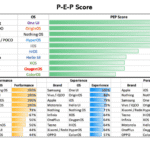By Salil Ahuja, Chief Strategy Officer, Shaurrya Teleservices
The Mumbai Metro Aqua Line was envisioned as a landmark in India’s urban mobility story as a modern, sustainable corridor that would redefine how Mumbaikars commute. Yet, despite the state-of-the-art infrastructure and technology investments, one persistent issue continues to frustrate commuters: poor mobile connectivity.
This is not a trivial inconvenience, but reflects deeper systemic gaps in how India is approaching the integration of digital infrastructure within urban development. As we chase the vision of smart cities, it is imperative that we rethink how digital connectivity is planned, funded, and delivered; not as an optional service, but as a fundamental civic utility.
Connectivity Is No Longer a Luxury
In today’s hyper-connected world, seamless access to mobile networks whether above or below ground defines the quality of urban life. From digital ticketing to emergency alerts, to real-time navigation, connectivity underpins every element of a smart transport system.
Globally, metro systems in cities like London, Hong Kong, and Singapore have integrated 4G and 5G infrastructure right from their design stage. Connectivity in these systems isn’t an afterthought; it’s embedded in the blueprint.
Mumbai’s Aqua Line, however, highlights a critical gap in how urban infrastructure and digital connectivity converge. Despite being one of Mumbai’s flagship metro corridors, mobile coverage remains inconsistent across several stretches and stations. The challenge lies not in the availability of technology, but in the absence of a unified deployment framework. A collaborative, shared infrastructure model such as the neutral-host approach could have enabled faster implementation, optimized investments, and ensured seamless connectivity for every commuter across Mumbai’s growing metro network.
But when each operator builds independently, the result is duplication of effort, uneven coverage, and increased deployment costs. The public pays the price, both literally and experientially, for something that can be solved with better planning.
The Case for a Neutral-Host Approach
The neutral-host model represents a smarter, more sustainable way forward. It involves deploying a single, shared digital infrastructure that serves all mobile operators equally which ensures comprehensive coverage, reduces redundancy, and accelerates rollout especially in complex environments like tunnels, stations, and high-density urban zones.
In global metros, neutral-host systems are the default choice. They allow public authorities to focus on efficient operations, while infrastructure specialists manage connectivity as a shared service. India’s metro and smart city projects can hugely benefit from adopting this approach early in their design and construction stages.
At Shaurrya Teleservices, we view connectivity as a critical layer of public infrastructure as vital as power or water. Our experience in building shared digital networks across metros, airports, and large campuses has shown that collaboration, not fragmentation, drives true digital inclusion.
Reimagining Smart Infrastructure Planning
For India to get its smart city dream accomplished, we have to shift from reactive connectivity planning to integrated digital design. Too often, communications infrastructure is an afterthought-put in only after physical construction is complete. Not only does it increase cost, but it also confines flexibility and performance.
Instead, it requires the cooperation of urban authorities and digital infrastructure providers right from the start. Planning for ducts, routes for fiber, and small-cell deployment alongside civil works saves time and public resources. It also ensures that every citizen, regardless of their telecom operator, experiences uniform service quality.
Such foresight becomes even more critical as cities move to IoT-based management systems whether it’s smart surveillance, predictive maintenance, or intelligent transport signalling. None of these innovations can thrive without a robust, shared digital backbone.
Economic and Social Multipliers of Connectivity
Reliable digital connectivity does more than enable convenience; it multiplies the value across the ecosystem. For transport authorities, this improves operational efficiency and enables data-driven decision-making. For businesses, it opens new revenue streams from targeted communication to digital engagement platforms.
More importantly, it democratizes access. Be it a student attending online classes on the way to college, or a commuter working remotely during travel, connectivity keeps productivity and inclusion alive in a megacity like Mumbai.
Our work at Shaurrya Teleservices has time and time again demonstrated that shared digital infrastructure not only improves network quality but also amplifies the socio-economic impact of public investments. When connectivity becomes universal, public assets perform better and are of more value to citizens.
A Policy and Mindset Shift Is Needed
The Aqua Line’s challenge is not unique. Across Indian cities, fragmented approaches to telecom deployment are slowing down our smart infrastructure transition. To address this, policymakers must encourage neutral-host and shared models through clear regulatory frameworks, faster approvals, and incentives for sharing infrastructure.
Urban authorities must also recognise that connectivity is no longer a private sector concern solely. It is a public necessity that underpins governance, safety, and citizen empowerment. Just as every metro tunnel must have lighting and ventilation, every station should have seamless mobile coverage; available to all, not tied to operator-specific arrangements.
The Way Forward
India stands at a very crucial juncture in its urban evolution with over 100 smart cities and multiple metro corridors under development, the choices we make today will shape the connectivity experience of the future over the coming decades.
The lesson from Mumbai’s Aqua Line is clear: infrastructure and connectivity can no longer exist in silos. Building truly smart cities requires an ecosystem approach which values collaboration, embraces shared models, and treats connectivity as foundational to urban living.
If we can bridge the gap between physical and digital infrastructure through integrated, neutral-host frameworks, India’s cities will not only be more connected but also be more inclusive, resilient, and ready for the digital future.
__________________________________________________________________________
About The Author
SALIL AHUJA is Chief Strategy Officer, Shaurrya Teleservices. Accomplished telecommunication strategist with 16+ years of experience spanning EMEA and India markets. Currently serving as Chief Strategy Officer at Shaurrya Teleservices, a Neutral Infrastructure Provider with IP-1 license and empanelled as a Digital Connectivity Rating Authority (DCRA).
Expert in driving Network-as-a-Service (NaaS) development, AI optimization, and digital transformation for MSMEs, enterprises, and commercial towers. Proven track record of managing USD 300M P&L and achieving 30% efficiency improvements in lead-to-cash journeys.
CORE COMPETENCIES
Strategic Leadership: Digital product strategy, regulatory compliance, AI-powered solutions, business transformation
Technical Expertise: VoIP, SD-WAN, SIP Trunking, Peering & Multi Cloud Connect services, BSS/OSS orchestration & Managed Services,
Business Acumen: P&L management, go-to-market strategy, stakeholder management, vendor negotiations, competitive analysis
Infrastructure: Neutral tower infrastructure, private networks, Digital Connectivity certification, regulatory frameworks
_____________________________________________________________________
About Shaurrya Teleservices Pvt. Ltd.
Shaurrya Teleservices Pvt. Ltd., headquartered in Mumbai, is a next-generation digital infrastructure company dedicated to transforming India’s connectivity landscape. Established in 2021, Shaurrya Teleservices telecom expertise through its leadership and has successfully deployed 500+ towers, 30 mn sq.feet in-building solutions and over 50,000 homepasses across six states. Its portfolio spans macro and micro towers, fibre-to-the-home (FTTH), and 5G-ready microcells and NAAS for enterprises.
What sets Shaurrya Teleservices apart is its dual positioning — providing neutral, regulatory-certified ratings while also offering turnkey solutions that help developers and corporates improve their digital infrastructure and achieve higher certification levels. This integrated approach makes Shaurrya Teleservices a trusted partner for real estate developers, large corporates, and MSMEs alike.
Backed by the vision and investment of its Chairman, Pankaj Agrawal, Shaurrya Teleservices, operates with a clear purpose: to make digital connectivity as reliable and essential as water and electricity in India’s built environment. Shaurrya is aligned with the vision of Viksit Bharat, which has its goal to improve the Quality of Life for Citizens by empowering Infrastructure & Technology.
___________________________________________
Disclaimer
The guest contribution purely reflects the opinions and views of the author. Techarc may or may not agree to these individual views.






Leave a Reply
You must be logged in to post a comment.